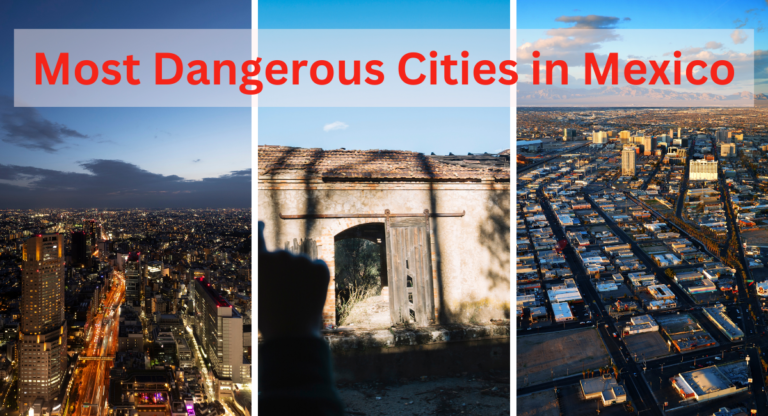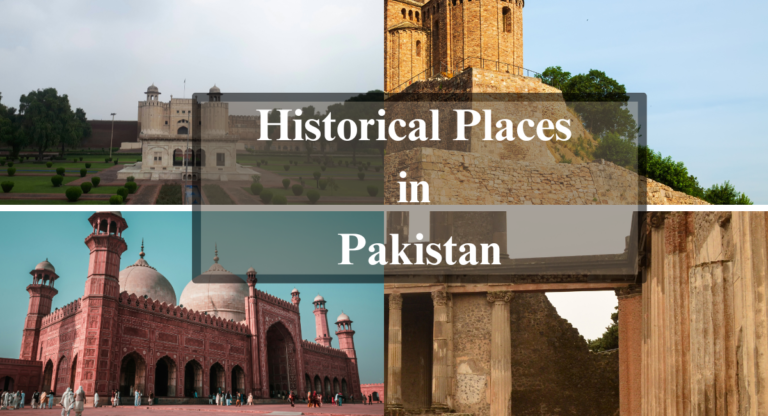Which Are the Top 10 Places to Visit in Spain in 2024?
Spain, a vibrant country in southwestern Europe, is a treasure trove of diverse landscapes, rich history, and vibrant culture. From the bustling streets of Madrid to the sunny beaches of Barcelona and the historic charm of Andalucía’s cities, Spain captivates visitors with its unique blend of ancient traditions and modern allure.
Whether you’re exploring iconic landmarks like the Sagrada Família, indulging in delicious tapas, or hiking through the scenic Pyrenees, places to visit in Spain offer something for every traveler. Its warm climate, welcoming people, and wealth of experiences make it a top destination for anyone seeking adventure, relaxation, or cultural immersion.
List of Places to Visit in Spain
The following is the list of top places to visit in Spain.
- Madrid
- Mallorca
- Barcelona
- La Rioja
- Andalucía
- Costa Brava
- Ibiza
- Basque Country
- Galicia
- San Sebastián
1. Madrid
Madrid, the capital of Spain, is a vibrant city known for its rich history, stunning architecture, and lively cultural scene. Located in the heart of the Iberian Peninsula, Madrid is a hub of Spanish culture and a top destination for travelers.
One of the city’s most iconic landmarks is the Royal Palace, a magnificent building that serves as the official residence of the Spanish Royal Family, though it is mainly used for ceremonial purposes. Visitors can explore its lavish rooms and beautiful gardens.
Madrid is also famous for its art museums. The Prado Museum is one of the most renowned, housing masterpieces by artists like Goya, Velázquez, and El Greco. The Reina Sofía Museum is home to modern and contemporary art, including Picasso’s famous painting, “Guernica.”
For those who enjoy outdoor spaces, Retiro Park is a must-visit. This large, green oasis in the middle of the city offers beautiful gardens, a large lake where you can rent rowboats, and numerous statues and monuments. It’s a perfect spot for a stroll or a picnic.
Madrid’s culinary scene is another highlight. The city is known for its tapas culture, where you can enjoy small plates of various dishes. Some local favorites include patatas bravas (fried potatoes with spicy sauce), jamón ibérico (Iberian ham), and churros with chocolate. The Mercado de San Miguel is a popular food market where you can sample a wide variety of Spanish delicacies.
Madrid is known for its lively nightlife. The neighborhoods of Malasaña and Chueca are popular for their bars, clubs, and live music venues, ensuring that the city stays awake long after the sun sets.
You Might Also Like: Beautiful Places to Visit in Switzerland
2. Mallorca
Mallorca, also known as Majorca, is the largest island in Spain’s Balearic Islands, located in the Mediterranean Sea. It’s a popular travel destination known for its stunning beaches, scenic landscapes, and rich history.
One of Mallorca’s biggest draws is its beautiful coastline, which features more than 200 beaches ranging from bustling resort areas to secluded coves. Playa de Palma and Cala Millor are popular beaches offering crystal-clear waters and plenty of amenities. For a quieter experience, Cala Figuera and Cala Mesquida are excellent choices.
The island’s capital, Palma, is a vibrant city with a mix of modern and historical attractions. The Palma Cathedral, also known as La Seu, is an architectural masterpiece that dominates the city’s skyline. Nearby, the Almudaina Palace and Bellver Castle offer a glimpse into Mallorca’s royal past and provide stunning views of the city and the sea.
Mallorca is also known for its charming villages. Valldemossa, set in the Tramuntana Mountains, is famous for its monastery where composer Frédéric Chopin once stayed. The village of Sóller, connected to Palma by a historic train, is known for its beautiful setting and vibrant market.
Nature lovers will appreciate the Serra de Tramuntana, a UNESCO World Heritage Site that runs along the island’s northwest coast. This mountain range offers excellent hiking and cycling trails with breathtaking views. The Caves of Drach, located on the eastern side of the island, are another natural wonder featuring impressive stalactites and stalagmites, as well as an underground lake.
3. Barcelona
Barcelona, the capital of Catalonia in Spain, is a vibrant city known for its unique architecture, rich culture, and lively atmosphere. Located on the northeastern coast of the Iberian Peninsula, Barcelona is a top travel destination offering a mix of historic charm and modern attractions.
One of the city’s most famous landmarks is the Sagrada Família, a stunning basilica designed by the renowned architect Antoni Gaudí. This iconic structure has been under construction since 1882 and is expected to be completed in the coming years. Gaudí’s influence is also evident in other parts of the city, such as Park Güell, a whimsical park with colorful mosaics and imaginative designs, and Casa Batlló, a uniquely designed building with a dragon-inspired roof.
The Gothic Quarter, or Barri Gòtic, is the historic heart of Barcelona. Its narrow, winding streets are filled with medieval buildings, charming squares, and the impressive Barcelona Cathedral. This area is perfect for exploring on foot and discovering hidden gems like small boutiques and cozy cafés.
La Rambla, a famous pedestrian street, stretches from Plaça de Catalunya to the waterfront. It’s lined with shops, restaurants, and street performers, making it a lively spot for a stroll. At the end of La Rambla, you’ll find the bustling Boqueria Market, where you can sample fresh produce, local delicacies, and delicious tapas.
Barcelona’s coastline features several beautiful beaches. Barceloneta Beach is the most popular, offering golden sands, clear waters, and a variety of beachside restaurants and bars. It’s an ideal place to relax and soak up the Mediterranean sun.
The city is also known for its vibrant arts and culture scene. The Picasso Museum showcases an extensive collection of the artist’s works, while the Museu Nacional d’Art de Catalunya (MNAC) houses a vast array of Catalan art. For a contemporary experience, the MACBA (Museum of Contemporary Art) offers rotating exhibitions of modern works.
4. La Rioja
La Rioja, a region in northern Spain, is renowned for its wine production, beautiful landscapes, and rich cultural heritage. It’s a top destination for wine lovers and those looking to experience the charm of rural Spain.
One of the main attractions of La Rioja is its wine. The region is famous for producing some of Spain’s best wines, particularly its red wines made from the Tempranillo grape. Visitors can explore numerous wineries, or bodegas, where they can tour the vineyards, learn about the winemaking process, and enjoy wine tastings. The town of Haro is a central hub for wine tourism, hosting the annual Haro Wine Festival and offering many opportunities to visit renowned wineries.
La Rioja’s capital, Logroño, is a vibrant city known for its culinary scene. Calle Laurel, a famous street in the old town, is lined with tapas bars offering a variety of delicious bites paired perfectly with local wines. The city’s historic center features beautiful buildings like the Concatedral de Santa María de la Redonda and charming squares such as Plaza del Mercado.
The region also boasts stunning natural scenery. The Sierra de la Demanda and Sierra de Cebollera mountain ranges provide excellent hiking opportunities with breathtaking views. The Ebro River, which flows through La Rioja, adds to the region’s scenic beauty and offers spots for peaceful walks and picnics.
For history enthusiasts, La Rioja offers several significant sites. The Monasteries of San Millán de la Cogolla, a UNESCO World Heritage Site, are considered the birthplace of the Spanish language. These monasteries, Yuso and Suso, are nestled in the picturesque Sierra de la Demanda and offer a glimpse into Spain’s medieval past.
Also See: Richest Countries in Europe
5. Andalucía
Andalucía, the southernmost region of Spain, is renowned for its diverse landscapes, rich history, and vibrant culture. It’s a top travel destination offering everything from stunning beaches and picturesque villages to grand historical sites and lively festivals.
One of the most famous cities in Andalucía is Seville, the region’s capital. Seville is known for its beautiful architecture, including the stunning Seville Cathedral, which houses the tomb of Christopher Columbus, and the Alcázar, a magnificent palace with exquisite gardens. The city is also famous for its lively flamenco dancing, particularly in the Triana neighborhood.
Granada is another must-visit city, home to the Alhambra, a breathtaking palace and fortress complex that showcases the splendor of Moorish architecture. The city’s Albaicín district, with its narrow winding streets and traditional white houses, offers spectacular views of the Alhambra and the Sierra Nevada mountains.
Córdoba is known for the Mezquita, a unique mosque-cathedral that reflects the city’s diverse cultural heritage. The historic center of Córdoba, a UNESCO World Heritage Site, is full of charming patios adorned with flowers and lively squares.
Andalucía’s coastline, known as the Costa del Sol, is famous for its beautiful beaches and sunny weather. Popular beach destinations include Marbella, with its glamorous resorts and lively nightlife, and Málaga, a vibrant city with a rich cultural scene and the birthplace of Picasso.
Andalucía hosts numerous festivals throughout the year, with Semana Santa (Holy Week) and Feria de Abril (April Fair) in Seville being particularly famous. These festivals showcase the region’s vibrant culture, featuring parades, traditional costumes, music, and dancing.
6. Costa Brava
Costa Brava, located in northeastern Spain along the Mediterranean coast, is a stunning region known for its rugged coastline, beautiful beaches, and charming seaside towns. It stretches from the town of Blanes, north of Barcelona, to the French border.
One of Costa Brava’s main attractions is its picturesque beaches and coves. Popular beaches include Platja d’Aro, Lloret de Mar, and Tossa de Mar, each offering golden sands, clear blue waters, and a variety of water sports activities. For a more secluded experience, the hidden coves of Cala Sa Boadella and Cala Pola are perfect for relaxing and enjoying the natural beauty.
The region is also rich in history and culture. The town of Tossa de Mar is home to the medieval Tossa de Mar Castle, which offers panoramic views of the coastline and a glimpse into the area’s past. Another historic site is the ruins of Empúries, an ancient Greek and Roman city near L’Escala, where visitors can explore archaeological remains.
Costa Brava is known for its charming towns and villages. Cadaqués, a favorite of artist Salvador Dalí, is a picturesque town with whitewashed buildings, narrow streets, and a beautiful bay. Nearby, the Dalí Theatre-Museum in Figueres is a must-visit for art lovers, showcasing the surrealist works of Dalí in his hometown.
The region’s natural beauty extends beyond its beaches. The Cap de Creus Natural Park offers stunning landscapes with rocky cliffs, hidden coves, and scenic hiking trails. The Medes Islands, located off the coast of L’Estartit, are a popular spot for diving and snorkeling, boasting rich marine life and underwater caves.
7. Ibiza
Ibiza, one of Spain’s Balearic Islands in the Mediterranean Sea, is famous for its lively nightlife, beautiful beaches, and scenic landscapes. It’s a popular destination for travelers looking for both relaxation and excitement.
The island’s nightlife is legendary, with Ibiza Town and Sant Antoni being the main hubs. Ibiza Town is home to some of the world’s most famous clubs, such as Pacha and Amnesia, where internationally renowned DJs perform regularly. Sant Antoni’s Sunset Strip is famous for its beachside bars where visitors can enjoy stunning sunsets accompanied by great music.
Despite its reputation for nightlife, Ibiza also offers plenty of opportunities for relaxation. The island boasts numerous beautiful beaches. Playa d’en Bossa is the longest beach on the island, offering a mix of beach clubs and water sports. For a quieter experience, Cala Comte and Cala Salada are known for their clear turquoise waters and picturesque settings.
Ibiza’s old town, Dalt Vila, is a UNESCO World Heritage Site. This historic area is located on a hilltop and surrounded by ancient walls. Visitors can explore its narrow cobblestone streets, charming squares, and historic buildings, including the impressive Ibiza Cathedral. The views from the top are breathtaking, offering panoramic vistas of the island and the sea.
Nature lovers will find plenty to enjoy in Ibiza. The island’s interior is dotted with pine forests, rolling hills, and traditional villages. Es Vedrà, a rocky islet off the southwestern coast, is a popular spot for boat trips and is steeped in myth and legend. The Ibiza countryside offers excellent hiking and cycling trails, providing a peaceful contrast to the bustling coast.
Ibiza is also known for its wellness retreats. Many resorts and spas offer yoga classes, wellness programs, and holistic treatments, making the island a popular destination for those seeking relaxation and rejuvenation.
Also Read: Most Beautiful Mosques in the World
8. Basque Country
The Basque Country, located in northern Spain and southwestern France, is an autonomous community known for its distinct culture, stunning landscapes, and renowned cuisine. It’s a fascinating destination blending modernity with rich traditions.
Bilbao, the largest city in the Basque Country, is famous for the Guggenheim Museum Bilbao, an architectural masterpiece designed by Frank Gehry. The museum houses a remarkable collection of contemporary art and has become an iconic symbol of the city’s cultural revival. Nearby, the Casco Viejo (Old Town) offers charming streets filled with traditional Basque pintxos bars, where locals and visitors alike enjoy small, flavorful bites.
San Sebastián (Donostia in Basque) is another jewel of the Basque Country, renowned for its beautiful beaches and world-class cuisine. La Concha Beach, with its crescent shape and calm waters, is one of the most photographed urban beaches in Europe. The city is also famous for its gastronomy, boasting numerous Michelin-starred restaurants and pintxos bars offering delicious Basque tapas.
Inland, the Basque Country is characterized by lush green mountains, picturesque valleys, and quaint villages. The town of Guernica (Gernika-Lumo) holds historical significance as the site of the bombing depicted in Picasso’s famous painting. Visitors can explore the Peace Museum and learn about the region’s history and culture.
The Basque Country is proud of its distinct language, Euskara, which is unrelated to any other known language. Signs throughout the region are often in both Spanish and Basque, reflecting its cultural identity.
Nature enthusiasts will appreciate the Urdaibai Biosphere Reserve, a UNESCO-designated area known for its biodiversity and stunning landscapes. It offers opportunities for birdwatching, hiking, and exploring coastal cliffs.
9. Galicia
Galicia, located in the northwest corner of Spain, is a region known for its lush green landscapes, rich cultural heritage, and delicious cuisine. It’s often referred to as the “land of a thousand rivers” due to its numerous waterways that flow from the mountains to the sea.
Santiago de Compostela, the capital of Galicia, is one of the most important pilgrimage destinations in the world. The city is home to the Cathedral of Santiago de Compostela, where the remains of Saint James the Apostle are said to be buried. The cathedral is a masterpiece of Romanesque and Baroque architecture and a UNESCO World Heritage Site. Pilgrims from around the globe walk the Camino de Santiago (Way of St. James) to reach this sacred site.
Galicia’s coastline, known as the Costa da Morte (Coast of Death) and the Rías Baixas, offers dramatic cliffs, pristine beaches, and picturesque fishing villages. The Rías Baixas are estuaries dotted with islands and known for their seafood, particularly the famous Galician shellfish like percebes (gooseneck barnacles) and pulpo a la gallega (Galician-style octopus).
Galicia is characterized by rolling hills, dense forests, and charming rural villages. The region is known for its traditional stone houses with distinctive hórreos (granaries) raised on stilts to protect grain from humidity and rodents.
Galicia’s cuisine is a highlight for visitors. The region is famous for its seafood dishes, hearty stews like caldo gallego (Galician broth), and creamy desserts such as filloas (thin pancakes) and tarta de Santiago (almond cake). The local Albariño wine, produced in the Rías Baixas, pairs perfectly with Galician cuisine.
Nature lovers will enjoy exploring the lush landscapes of Galicia. The Atlantic Islands National Park, off the coast of Vigo, is a protected area known for its biodiversity and pristine beaches. The Fragas do Eume Natural Park, with its ancient forests and hiking trails, offers a tranquil escape into nature.
10. San Sebastián
San Sebastián, also known as Donostia in Basque, is a charming city located in the Basque Country of northern Spain. It’s renowned for its beautiful beaches, exquisite cuisine, and vibrant cultural scene, making it a top destination for travelers seeking both relaxation and cultural experiences.
One of the main attractions in San Sebastián is La Concha Beach, a crescent-shaped bay with golden sands and calm waters. It’s consistently ranked among the best urban beaches in Europe, offering stunning views of the bay and the surrounding mountains. Nearby, Zurriola Beach is popular with surfers due to its waves.
The city is a paradise for food enthusiasts, with more Michelin-starred restaurants per square meter than anywhere else in the world. San Sebastián’s culinary scene revolves around pintxos, the Basque version of tapas. The historic Parte Vieja (Old Town) is filled with pintxos bars where you can sample a wide variety of small, flavorful dishes paired with local wines or txakoli, a slightly sparkling white wine.
San Sebastián is also known for its cultural events and festivals. The San Sebastián International Film Festival, held annually in September, attracts film buffs and celebrities from around the world. During the summer months, the city hosts the Semana Grande (Big Week), a lively festival with fireworks, concerts, and traditional Basque sports.
The city’s architecture blends Belle Époque elegance with modern design. The iconic María Cristina Hotel, overlooking the Urumea River, is a prime example of the city’s historic charm. The Kursaal Congress Centre and Auditorium, designed by architect Rafael Moneo, is a modern landmark that hosts cultural events and conferences.
San Sebastián’s green spaces offer opportunities for outdoor activities. The Miramar Gardens and Monte Igueldo provide panoramic views of the city and the bay, while Monte Urgull offers hiking trails and historical sites such as the Castillo de la Mota.
Conclusion
In conclusion, the top places to visit in Spain offer a wealth of experiences for travelers of all interests. Whether you’re drawn to its vibrant cities, stunning beaches, rich history, or delicious cuisine, Spain delights at every turn. Spain invites you to discover its warmth, beauty, and endless charm. Plan your journey and uncover the magic today!
FAQs
What Is Spain Famous For?
Spain is famous for its rich cultural heritage, vibrant cuisine including paella and tapas, iconic landmarks like the Sagrada Família and Alhambra, passion for football with clubs like FC Barcelona and Real Madrid, and stunning natural landscapes from Mediterranean beaches to the Pyrenees mountains.
Which Is the Best Month to Visit Spain?
The best month to visit Spain is typically May or September when the weather is pleasant and crowds are fewer compared to peak summer months. These months offer a balance of warm temperatures, ideal for enjoying beaches and outdoor activities, along with comfortable conditions for sightseeing.
What Is the Cheapest Time to Go to Spain?
The cheapest time to visit Spain is generally during the winter months, from late November to February, excluding major holidays like Christmas and New Year’s. During this period, you can find lower prices on flights, accommodation, and tourist attractions, making it a budget-friendly time to explore the country.
What Are Spain’s Most Visited Cities?
Spain’s most visited cities include Madrid, Barcelona, Seville, Valencia, and Granada.
What Is Spain Ranked in Safety?
According to the 2023 Global Peace Index, Europe is statistically the safest continent in the world. Spain ranks 32nd out of 163 countries in the survey, placing it above its direct neighbors, Italy, France, and the United Kingdom.

I’m Sophia Jones, an adventurer at heart from New York City, USA. I live for travel and exploration, always eager to discover new places, meet fascinating people, and try out diverse cuisines. Over the past few years, I’ve traveled to numerous countries, immersing myself in different cultures and creating unforgettable memories.






